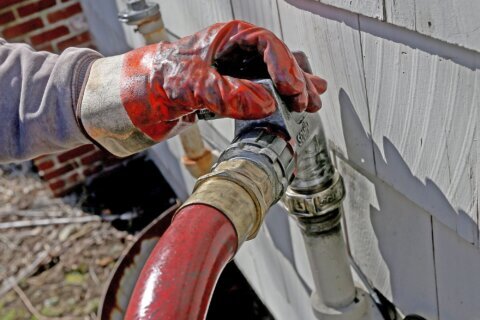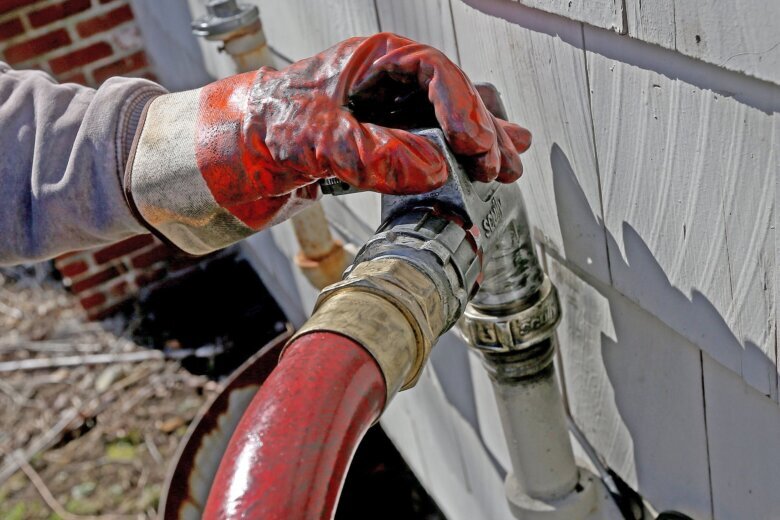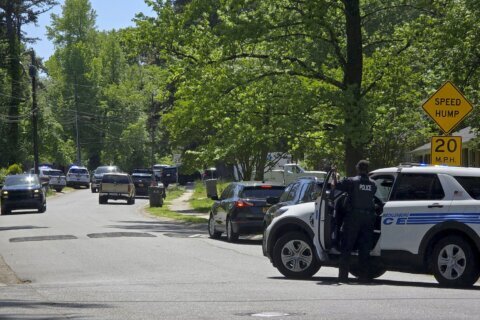
(CNN) — When an Arctic blast hit Massachusetts earlier this month, the phones started ringing more frequently at Citizens for Citizens. Desperate residents in the southeastern part of the state needed help with their mounting energy bills.
But the nonprofit group had to tell many of the callers that it could not rescue them this time. Congress is on track to allocate $2 billion less for the Low Income Home Energy Assistance Program, known as LIHEAP, so Massachusetts has been forced to cut the amount of aid it can give people in need.
Last year, residents who heat with oil could get up to $2,350 of their tab paid, while those who use electricity or natural gas could get up to $1,550. But this year, the maximums are $1,500 and $1,000, respectively. So folks who already received the maximum amount of assistance but need another oil delivery, for instance, are out of luck.
“It’s January, and people are cold,” said Liz Berube, Citizens for Citizens’ executive director, who is also seeing more first-time applicants this winter.
“It’s heartbreaking for us to tell someone we don’t have anything for you.”
The drop in federal funding for LIHEAP comes at a time when the number of people behind in their utility bills and the amount of money they owe are at record highs, according to the National Energy Assistance Directors Association, which began tracking these figures when arrearages exploded at the start of the Covid-19 pandemic in 2020.
Some 21.2 million households – or more than 1 in 6 in the US – owed money on their electricity bills in December, up from 20.1 million a year earlier. Electricity and natural gas arrearages combined hit $20.3 billion, up from $17.8 billion the year before.
Also, the demand for LIHEAP is at historic levels. It served 7.1 million households in fiscal year 2023, which ended September 30.
“More and more families can’t afford the cost of home energy. They are falling behind on their bills,” said Mark Wolfe, the association’s executive director. “LIHEAP definitely helps them. This is not the right time to cut the program.”
The cost of heating in the winter and cooling in the summer have skyrocketed in recent years as energy prices soared. Though inflation has ebbed, prices remain higher than they were prior to the pandemic.
Recognizing the need, lawmakers have funneled several billion dollars more each year into LIHEAP, which typically receives around $4 billion in base funding. The Biden administration in October requested an additional $1.6 billion for LIHEAP.
But Congress has yet to fund government agencies for fiscal year 2024, which has forced states to assume they’ll get only the base level of funds. That means they must cut the amount of benefits households receive, reduce the number of people who are helped or cut their cooling programs, among other actions, Wolfe said.
More than 1.4 million households could lose assistance if lawmakers don’t provide another $2 billion in funding, he added.
Pulling back on aid
The Merced County Community Action Agency in California has already had to turn some people away without receiving any aid this year.
The nonprofit expects to help fewer than 3,000 people with the roughly $1 million in LIHEAP funding it is set to receive this year, said Armando Valenzuela, the agency’s LIHEAP director. That’s a far cry from the more than 7,000 people it assisted last year, when it received $2.4 million.
“Last year, we had additional funding that we normally don’t get,” he said. “It allowed us to service clients that wouldn’t have previously qualified.”
Now, the agency is focused only on its most vulnerable households – seniors, people with disabilities and families with children under age 5. So even though there is a line of people with shutoff notices waiting outside every day, staffers must tell those who don’t meet these criteria that they can’t get any assistance.
Other LIHEAP groups haven’t had to turn people away yet, but they are struggling to process all the applications they are receiving.
At Community Options North Dakota, outreach officer Shannon Rolandson said she’s received 68 applications so far this year, about double the number in early 2023. She’s had to add two more staffers to her team of four and is looking to hire two additional people.
The calls for assistance increased when the state experienced a deep freeze in early January – the high temperatures were below zero degrees and the wind chill made it feel like minus 70 degrees. But by that time, many folks were already in crisis mode.
“People have higher bills, and they’re unable to make those payments,” Rolandson said. “They get stuck with these past due amounts in the thousands of dollars, and they don’t have the money to pay. It just keeps growing and growing and growing.”
The-CNN-Wire
™ & © 2024 Cable News Network, Inc., a Warner Bros. Discovery Company. All rights reserved.







